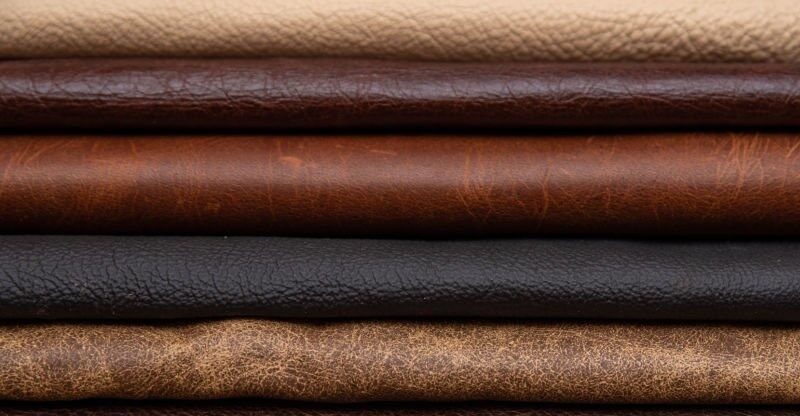Camel Leather Color: 7 Stunning Shades You Should Know

Camel leather color is one of the most fascinating features of this natural, durable material. Its tones reflect the environment camels live in—dry deserts, sunbaked landscapes, and arid climates—which gives camel leather a unique, earthy appeal. These natural tones are more than just aesthetic; they speak to a story of resilience, heritage, and sustainability.
Camel leather is known for its durability and rich texture, but what truly sets it apart in the fashion and leather industries is its color range. Whether you’re a designer, manufacturer, or conscious consumer, understanding the beauty and depth of camel leather color helps you make better design and buying choices.
🌾 Natural Camel Leather Colors: Straight From the Desert
The natural color of camel leather is generally unaltered and beautiful in its raw form. This includes hues such as:
-
Beige – Light, subtle, and minimalistic, perfect for luxury accessories.
-
Golden tan – The most iconic camel leather color, warm and sophisticated.
-
Honey brown – A rich and slightly darker tone that adds elegance to any product.
-
Rustic brown – Deeper and more rugged, ideal for vintage or heritage-style leather goods.
-
Caramel – Bold, premium-looking, and ideal for statement pieces.
These tones often develop a natural patina over time, enhancing the leather’s visual richness and storytelling aspect. Unlike synthetic or highly processed leathers, camel leather ages beautifully and retains its unique texture and color.
🎨 Dyed Camel Leather: Combining Nature with Creativity
Although the natural camel leather color is loved for its authenticity, dyed camel leather is also gain

ing popularity. Tanners use environmentally friendly vegetable-based dyes to produce a wide array of options, including:
-
Deep black – Sleek and modern, perfect for urban luxury.
-
Burgundy red – A bold statement shade, popular in high fashion.
-
Olive green – Reflects a connection to nature and sustainability.
-
Navy blue – Elegant, versatile, and timeless.
-
Dark grey or charcoal – Minimal and professional.
The dyeing process retains the leather’s signature grain, durability, and breathability while expanding its use across industries—from handbags and jackets to footwear and interior design.
🎯 Why Camel Leather Color Matters
Choosing the right camel leather color is about more than appearance. It also affects:
-
Perceived value: Deeper tones and even, natural finishes often increase the sense of luxury.
-
Brand positioning: Earthy, sustainable colors speak to eco-conscious branding.
-
Product use: Light tones are great for modern designs; darker tones for vintage or utility styles.
-
Aging and maintenance: Natural colors tend to age better and develop richer character with use.
In Dubai and across the Middle East, camel leather is also culturally significant. Its color is often linked to regional aesthetics and craftsmanship traditions, making it more than just a fashion choice—it’s a reflection of heritage.
“For a deeper understanding of why camel leather color matters, you can read this insightful article on Medium.“
🛍️ What We Offer at Artnamic
At Artnamic, we provide a wide variety of camel leather colors to suit different creative needs. Our catalog includes both natural camel leather color options and custom-dyed shades, all processed using eco-friendly tanning techniques that preserve the leather’s integrity.
Whether you’re a boutique brand, a large-scale manufacturer, or a designer looking for sustainable materials, we help you source the ideal camel leather color for your project.
👉 Explore our camel leather collection and get in touch with our team for bulk orders or custom color requests.
✅ Conclusion: Why Camel Leather Color Is a Game-Changer
In conclusion, camel leather color is not just about tone—it’s about authenticity, sustainability, and character. Whether you prefer the natural desert-inspired hues or custom-dyed luxury finishes, camel leather offers a stunning palette that elevates any product.
Choosing camel leather means choosing a material that is:
-
Naturally beautiful and durable
-
Available in a wide range of aesthetic tones
-
Environmentally responsible
-
Deeply rooted in cultural craftsmanship
Add depth, story, and sustainability to your designs with the rich colors of camel leather.
FAQ (Frequently Asked Questions)
1. Why does camel leather color matter in product quality?
The color of camel leather reflects the quality of the tanning process and the type of hide used. A consistent and natural color indicates proper tanning, which helps maintain the leather’s durability and appearance over time.
2. How do tanning methods affect the color of camel leather?
Vegetable tanning usually produces warmer, earthy tones, while chrome tanning often results in brighter, more uniform colors. The tanning method influences not only the shade but also the leather’s texture and longevity.
3. What natural factors influence the color variation in camel leather?
The camel’s age, environment, and breed affect the hide’s natural color. Camels from different regions may have lighter or darker hides, leading to unique color variations in the finished leather.
4. How can customers maintain the original color of camel leather products?
To preserve the color, avoid prolonged exposure to direct sunlight, keep the leather clean and moisturized with suitable products, and store items in cool, dry places. Regular maintenance helps prevent fading and discoloration.


One thought on “Camel Leather Color: 7 Stunning Shades You Should Know”